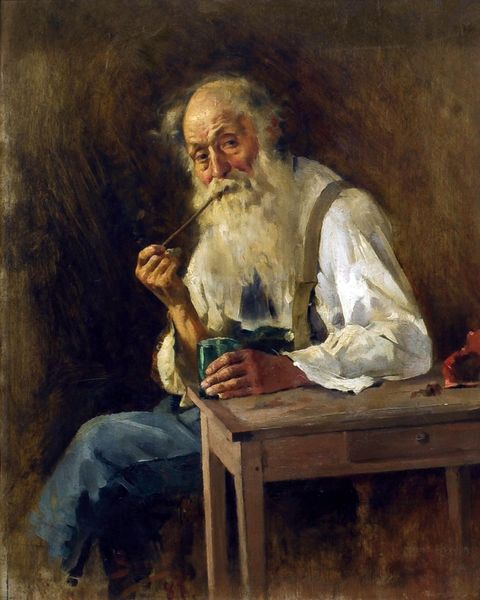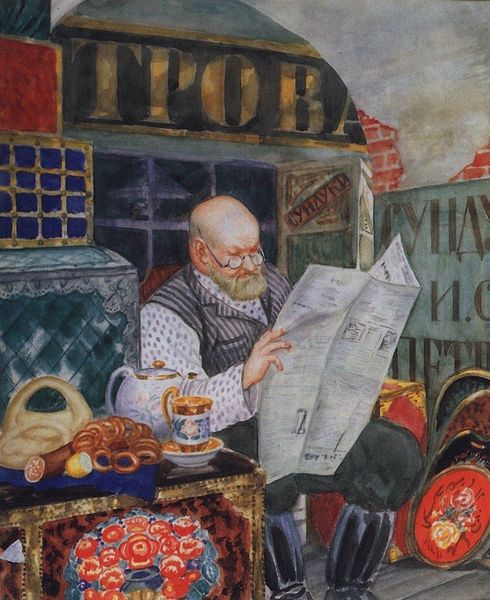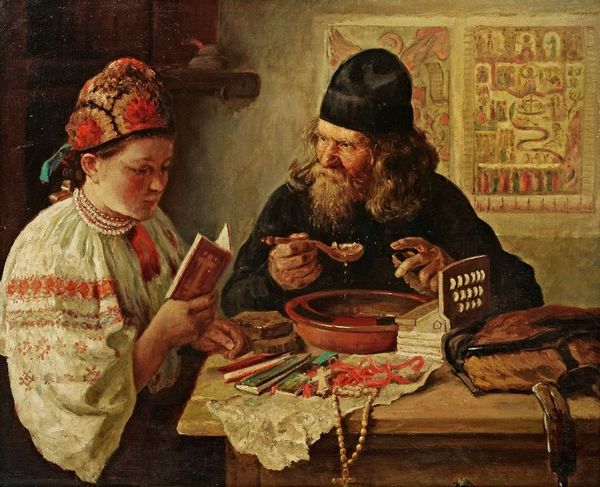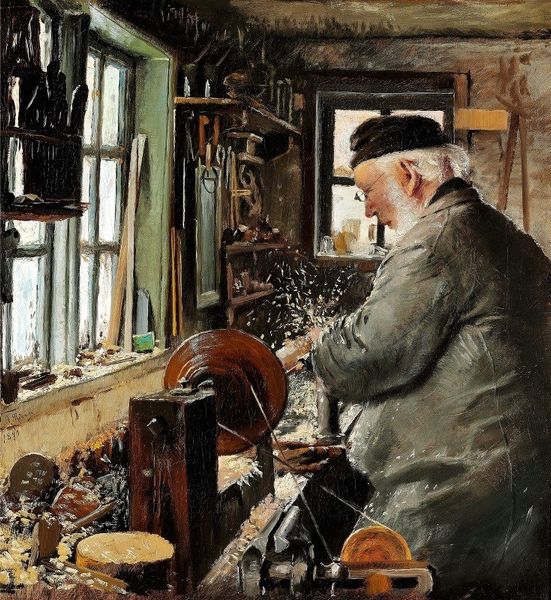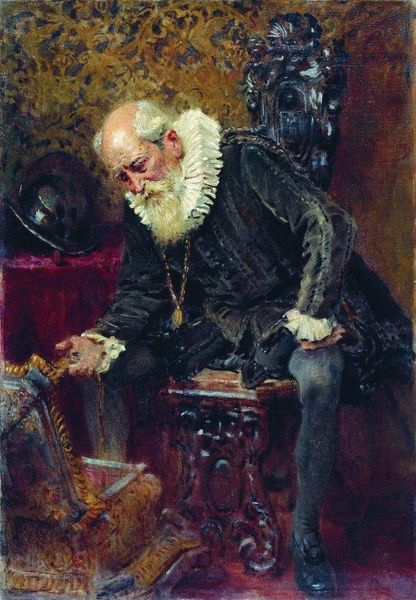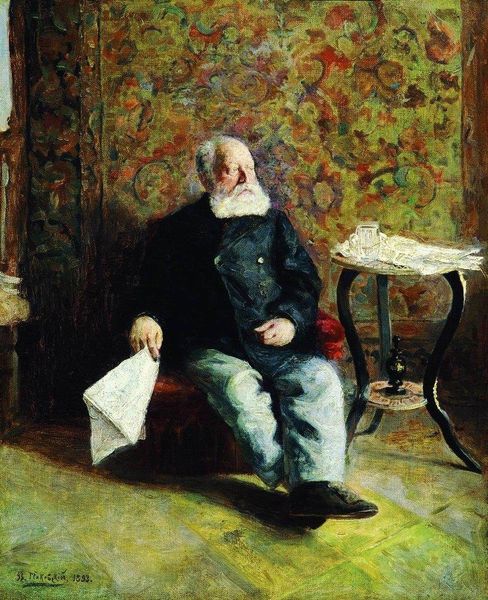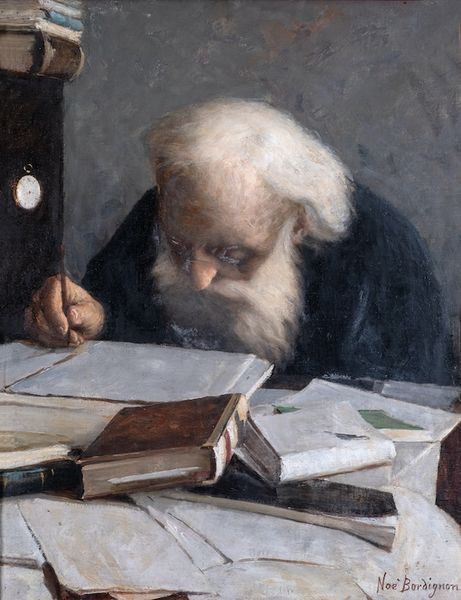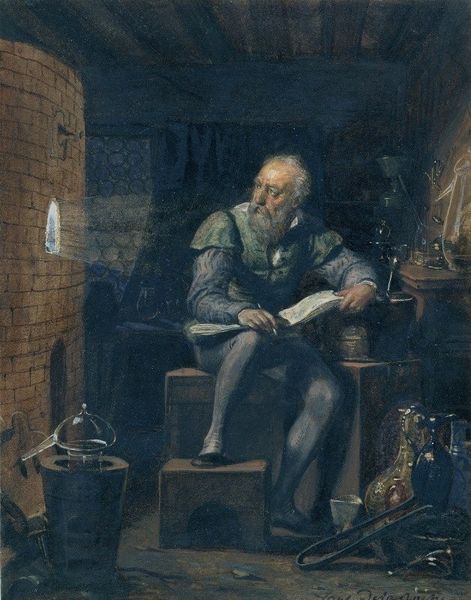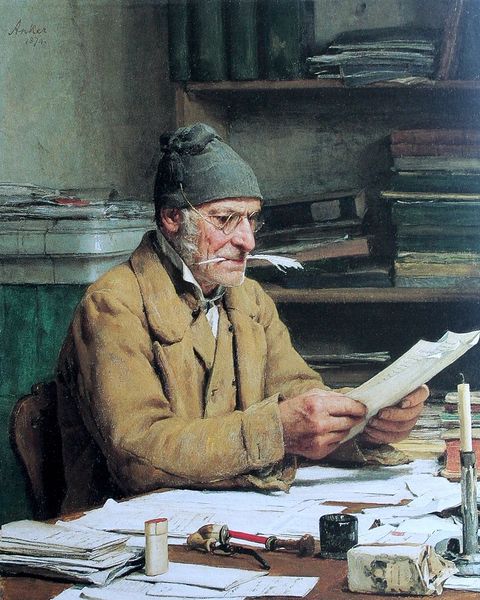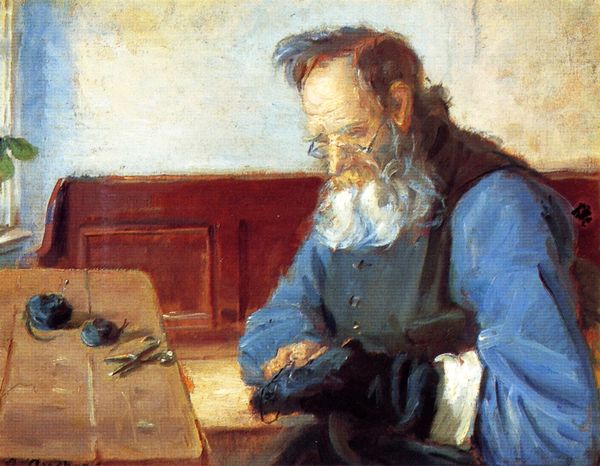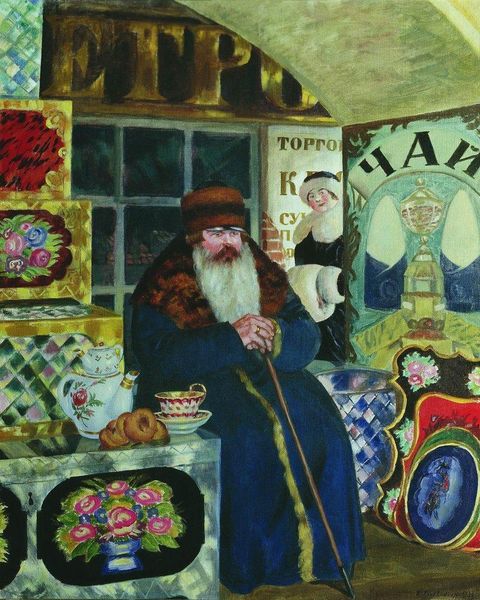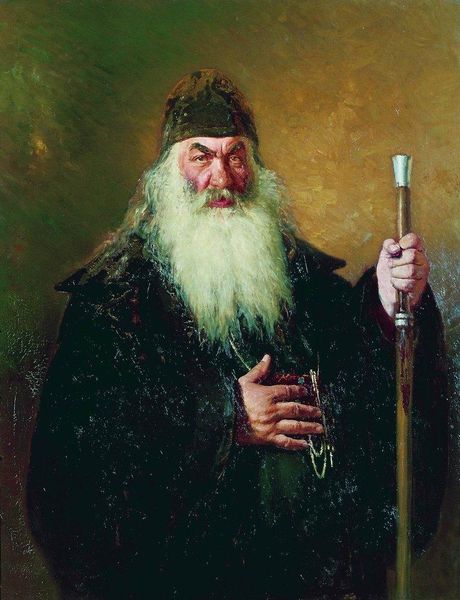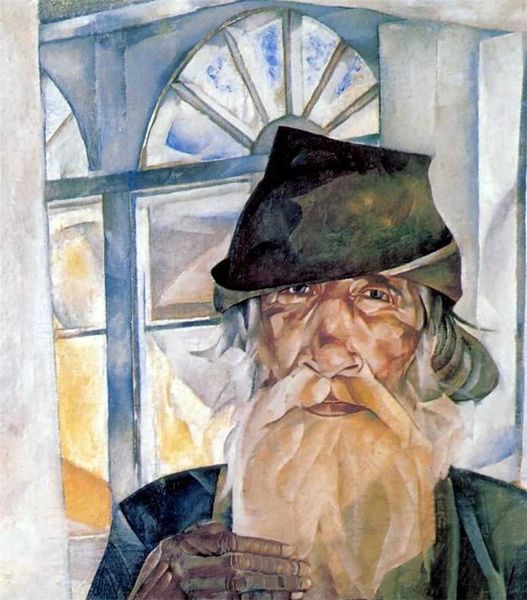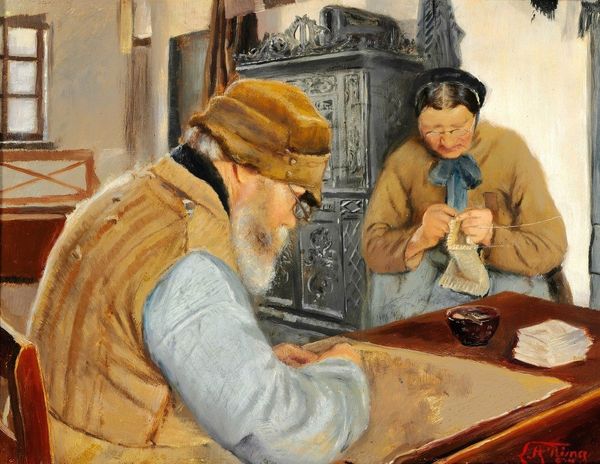
oil-paint
#
portrait
#
oil-paint
#
figuration
#
oil painting
#
male-portraits
#
russian-avant-garde
#
genre-painting
Copyright: Public domain
Curator: Here we have Boris Kustodiev’s "A Merchant," painted in 1918. Editor: What immediately strikes me is the density of material! It's all there on the surface: textiles, metal, wood, paper – all tangible, solid. Almost overwhelmingly so. Curator: Absolutely. And that density is further reinforced by Kustodiev's bold, almost crude, application of oil paint, and that strong focus on light. See how it emphasizes the surface texture. Editor: It does. It begs the question: what are these materials? Where do they come from, what purpose do they serve, and who produced them? We have a box brightly adorned with traditional flower and bird imagery sitting alongside an abacus, an antiquated counting tool which implies the labour of managing these resources in times of war. Curator: Note how the artist frames the central figure with geometrical repetition of shape in the money and counters. Consider, too, the implied geometry of the shelf behind him. It presents a man confined within a material matrix of his own making. There is a tension. Editor: It makes me think about access and control. Consider, too, the clothing. While expensive materials indicate wealth, they seem heavy on him, adding weight to a picture that, without even knowing about the political climate, is tinged with tension. How can we consider that context to further inform how Kustodiev portrays the labour inherent in this man's merchant activity? Curator: Certainly. But what resonates most strongly for me is the sense of confinement. The tightly cropped composition, the subject's wary expression... it all contributes to a feeling of being trapped, visually and psychologically. A material abundance and no escape. Editor: Agreed. It offers, then, a critical commentary on economic systems themselves. A powerful display of both material and method, revealing how they can come together to portray more than just an image. Curator: Precisely. I am glad that Kustodiev encourages a debate about how his art has been designed so masterfully. Editor: And for me, the real revelation is the ability of these materials to create an almost visceral reaction to the economic disparities presented by Kustodiev in that critical period of Russian history.
Comments
No comments
Be the first to comment and join the conversation on the ultimate creative platform.
